With thousands of individual islands, Indonesia is a vibrant and diverse country that has something for everyone. From the liberal and friendly college atmosphere of Yogyakarta to the beautiful, stunning, and sometimes frightening volcanic landscapes, to the unique Hindu enclave of Bali, Indonesia truly has something for everyone.
The Good
Volcanoes
Indonesia has many amazing volcanic landscapes. A person is spoiled for choice when it comes to visiting and hiking volcanoes. Even for passive observers, many times a volcano or two can be seen in the distance from town or the beach. During our time in Indonesia, we were able to hike Mt. Bromo, Ijen, and Rinjani. All were breathtaking and fun to hike! Especially at Rinjani, where we were scrambling a quarter of the time.
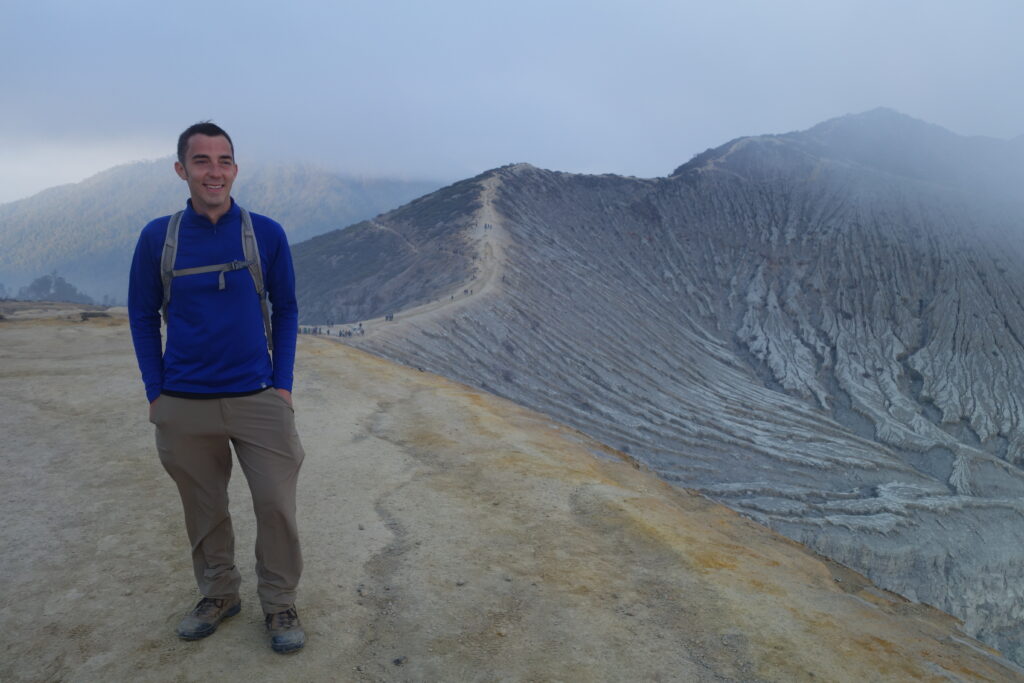


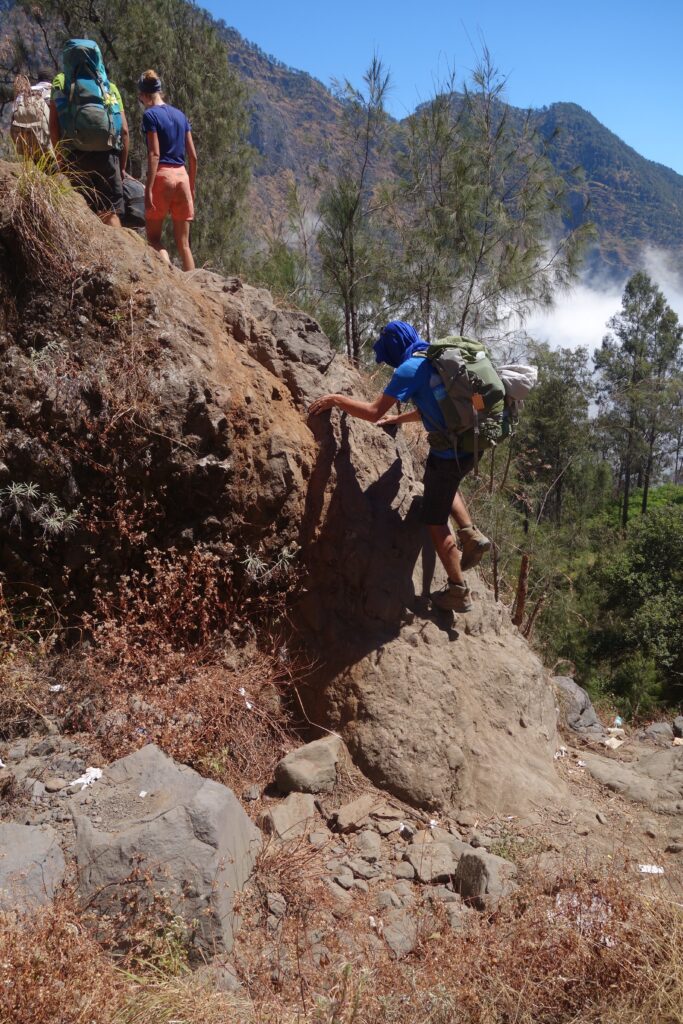

The only downside was the sulfuric stink (at Ijen and Bromo)!
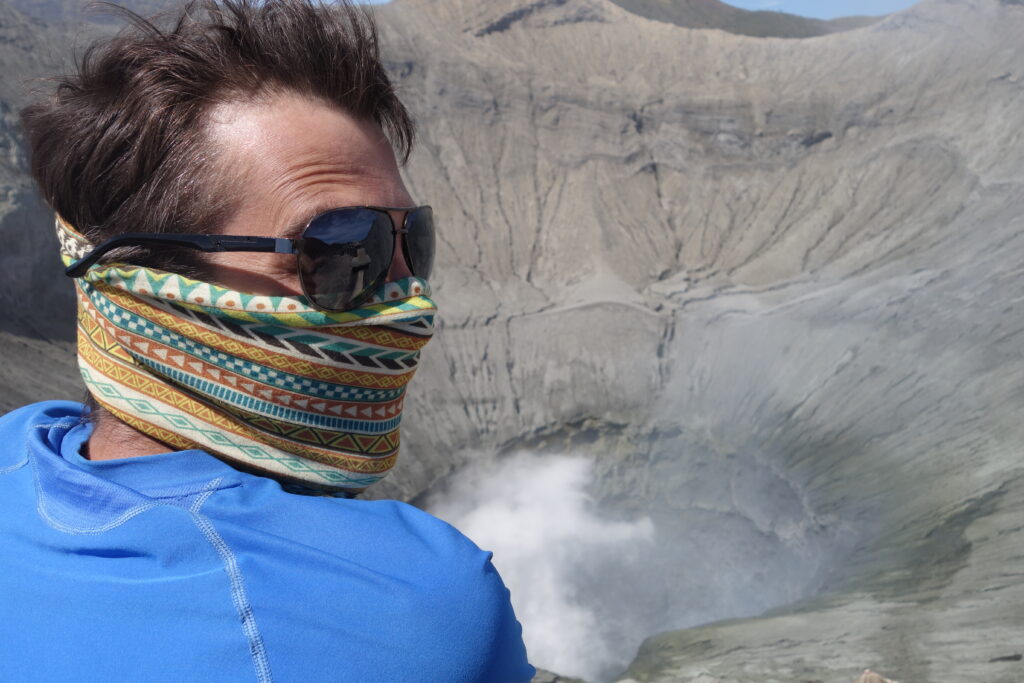
The people of Java
As we walked from one temple to another in Jogjakarta, we were smiled at and greeted by almost every single person we walked by. We later asked our CS host about it, and he confirmed that specifically the people from the island of Java are known for their friendly character. Even on the local bus the staff would ask you where you were going and make sure that you boarded the correct bus and got off at the right spot. We were also given a map and great directions by the conductor during our transit.
Style
The unique fashion and style of Indonesia was by far one of my favorite aspects of the country.
Batik
Indonesia is known for its batik cloth and it really was everywhere! The cloth is made into shirts, skirts, tied to make a bag, used as a blanket caped over the shoulders, or used to pad a woman’s head for carrying things on her head!
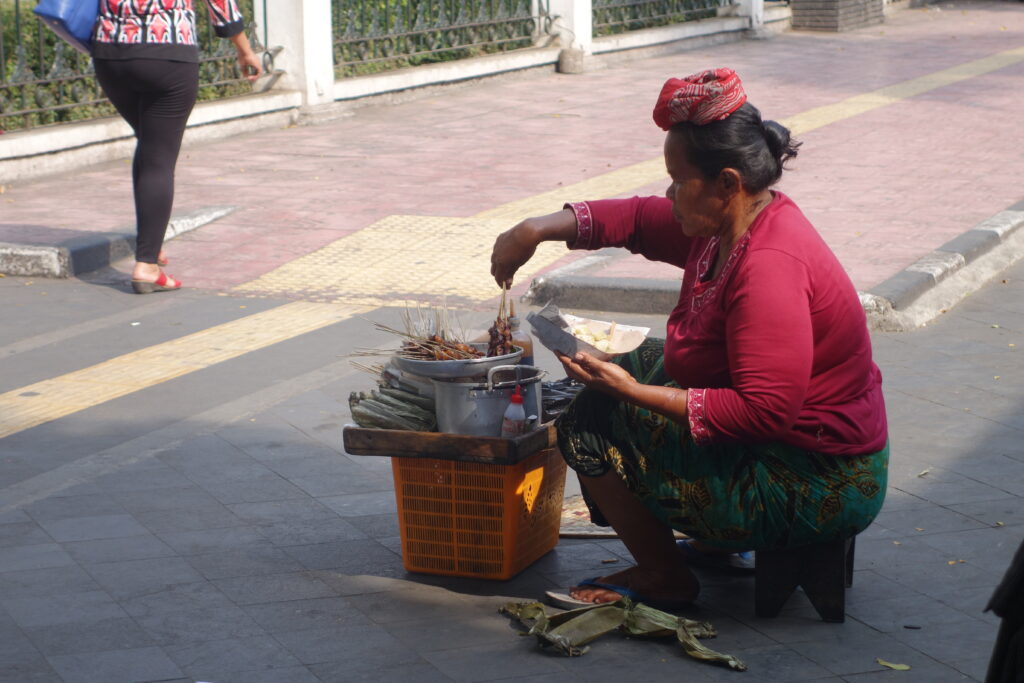
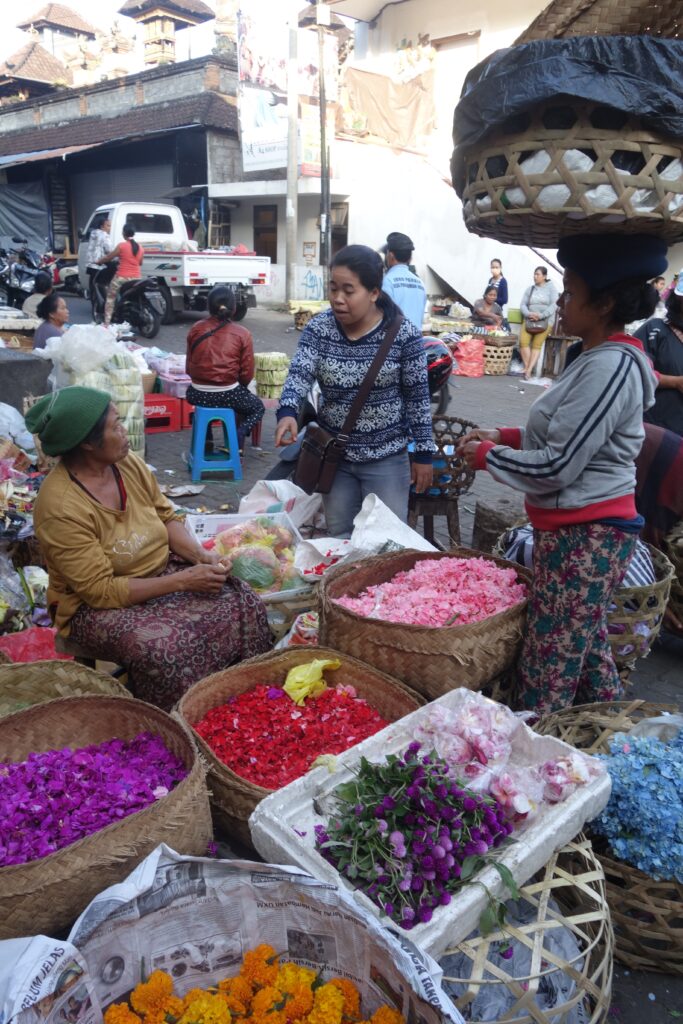
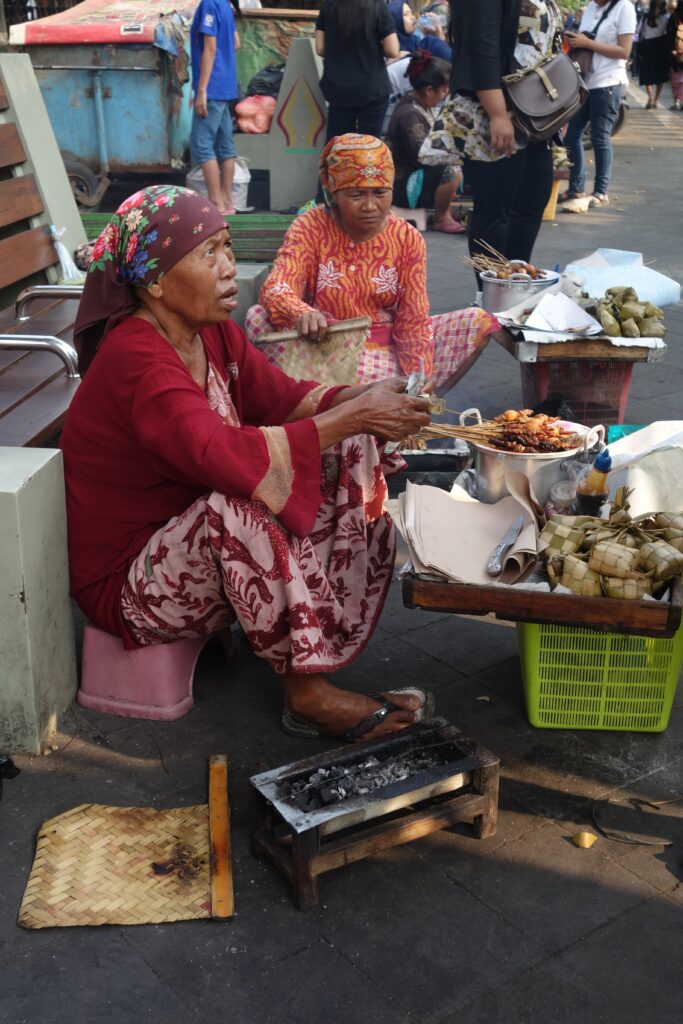
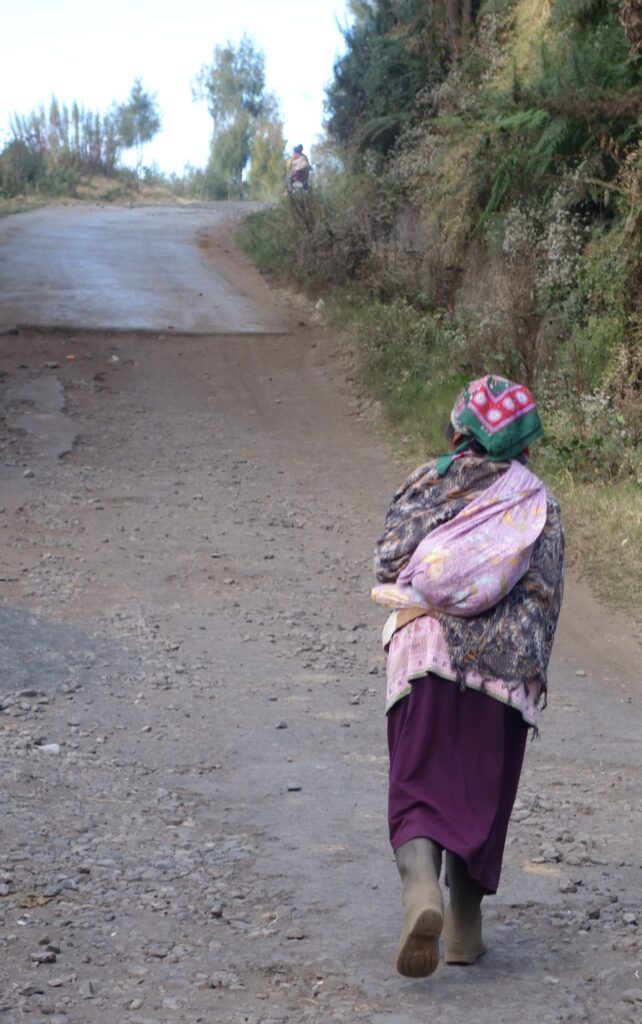
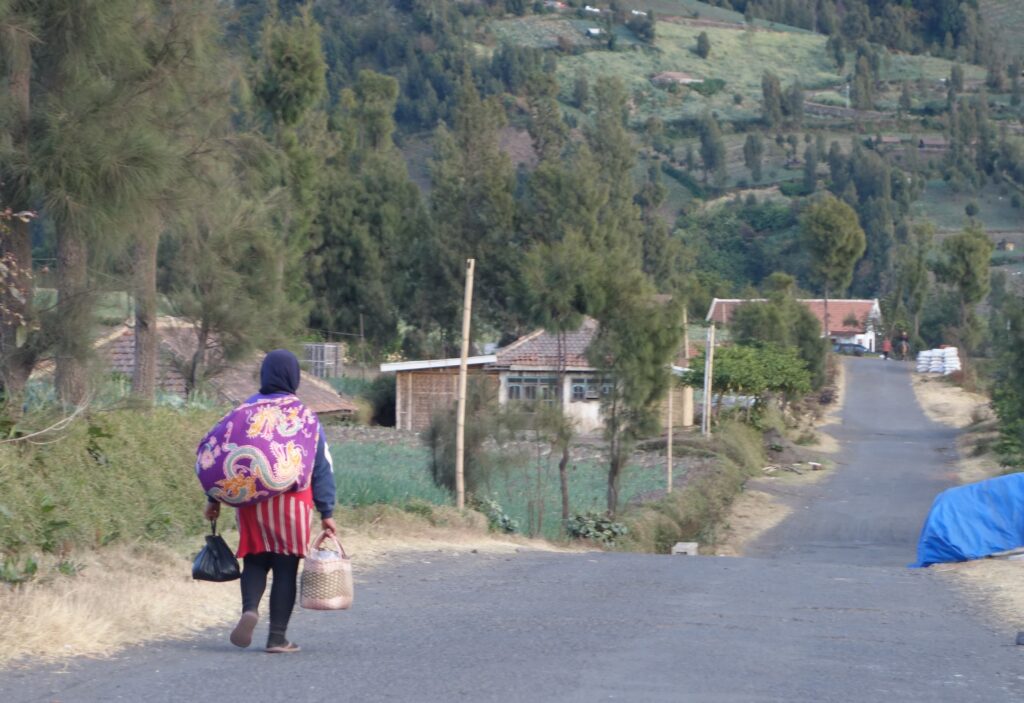
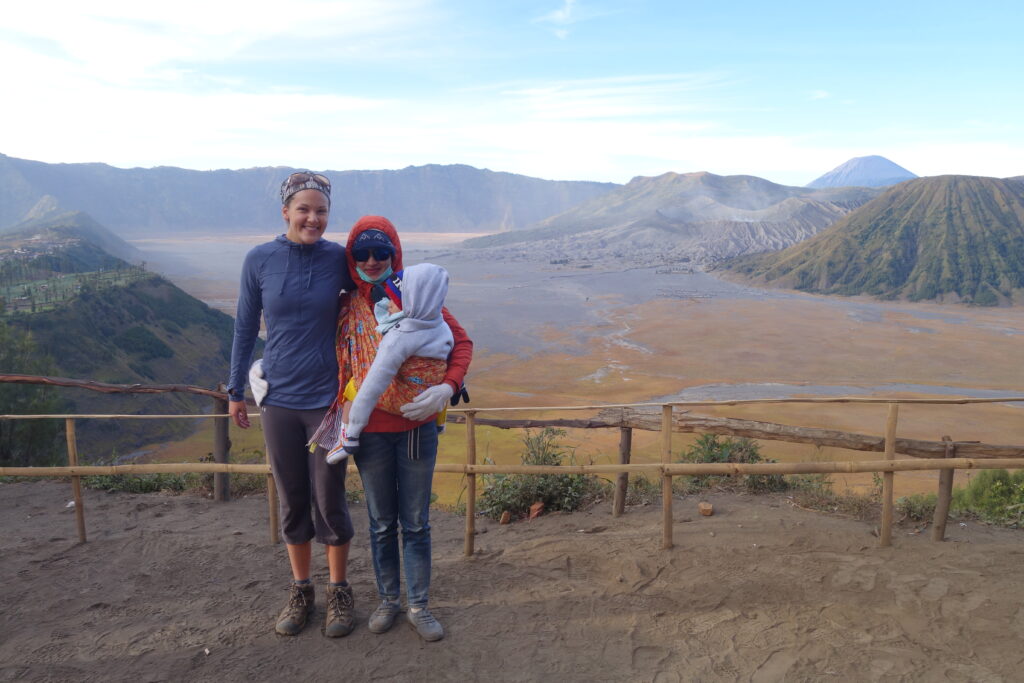

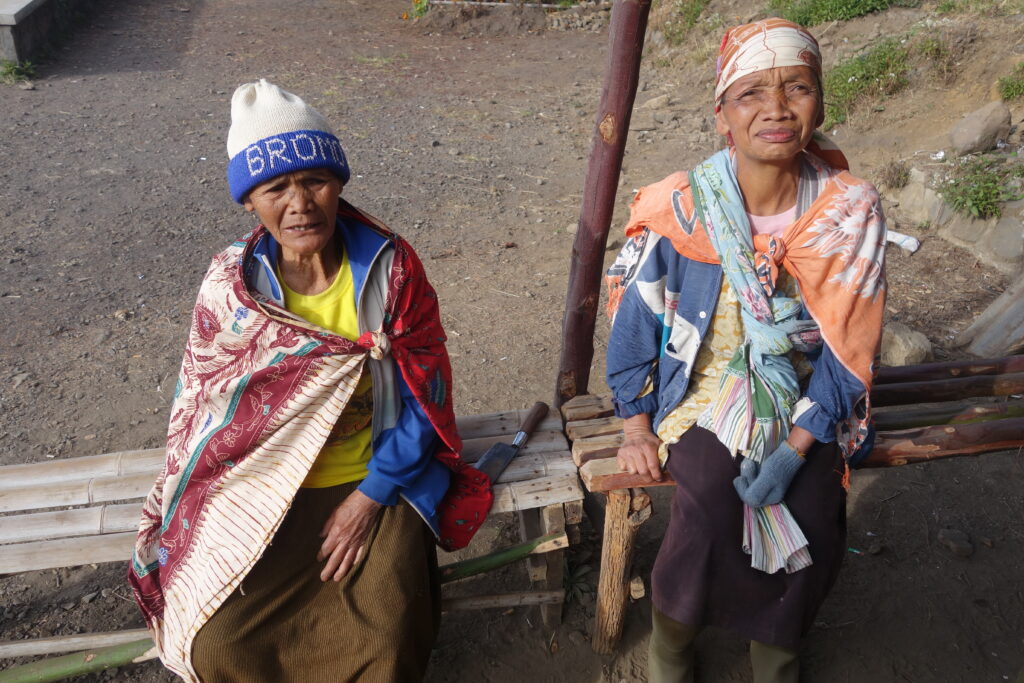
Many of the men on the island of Bali wore traditional batik clothing, especially in Ubud.

Rings
Rings are very popular in Indonesia; we also saw this trend in Malaysia. They are fashionable and also can be worn for good luck or supernatural properties. The explanation that supernatural beings inhabit the rings is definitely the most interesting one, but it is also possible that the rings are being worn for astrological balance by a Buddhist or Hindu.


Variety
Culture
Hundreds of thousands of islands make up Indonesia. Because the country is so spread out and the islands can be somewhat isolated from each other, Indonesia has quite variable religions, languages (there are 4 languages spoken on the small island of Lombok alone), and cultures. On the island of Java, Islam is the primary religion, whereas on the island of Bali, most practice Hindu alongside traditional animist beliefs.
Religion
It was interesting to learn about the religious rituals performed daily by the Balinese people (who practice a religion which combines animism and Hinduism). Multiple times a day offerings would be put out for the spirits. The offerings would consist of a small amount of food, flowers, holy water, and incense. These offerings are meant to appease the spirits with pleasant smells, sights, and tastes. The offerings put on the ground are meant for the evil spirits (Sanghyang Kala), while the offering put on altars are for the good spirits and the Gods who reside at Gunung Agung (Bali’s highest mountain). Offerings were also made for vehicles.

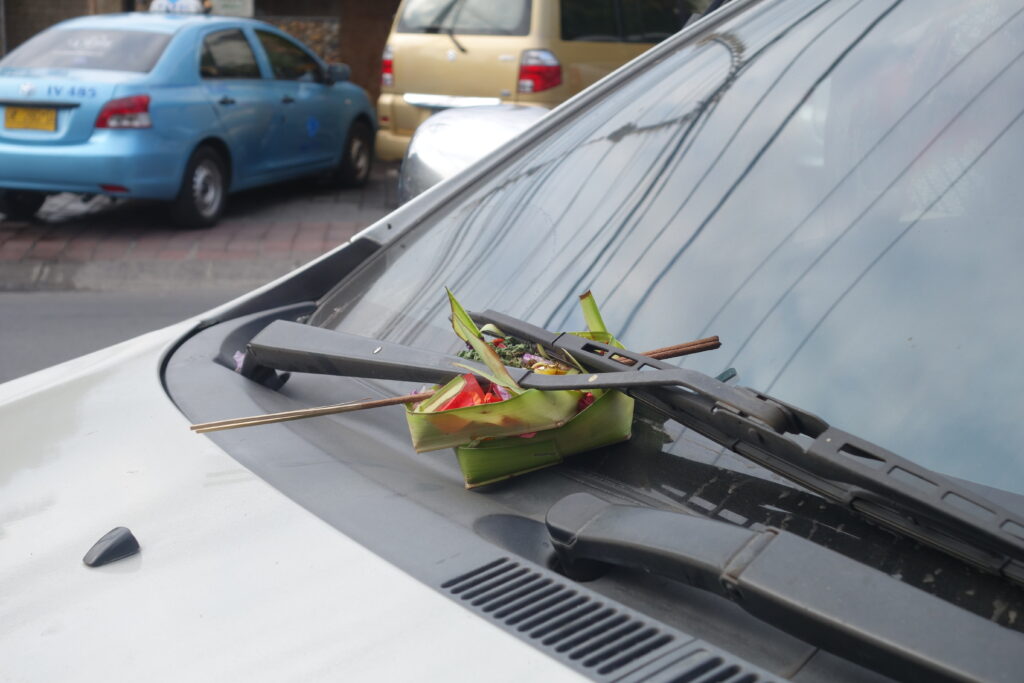
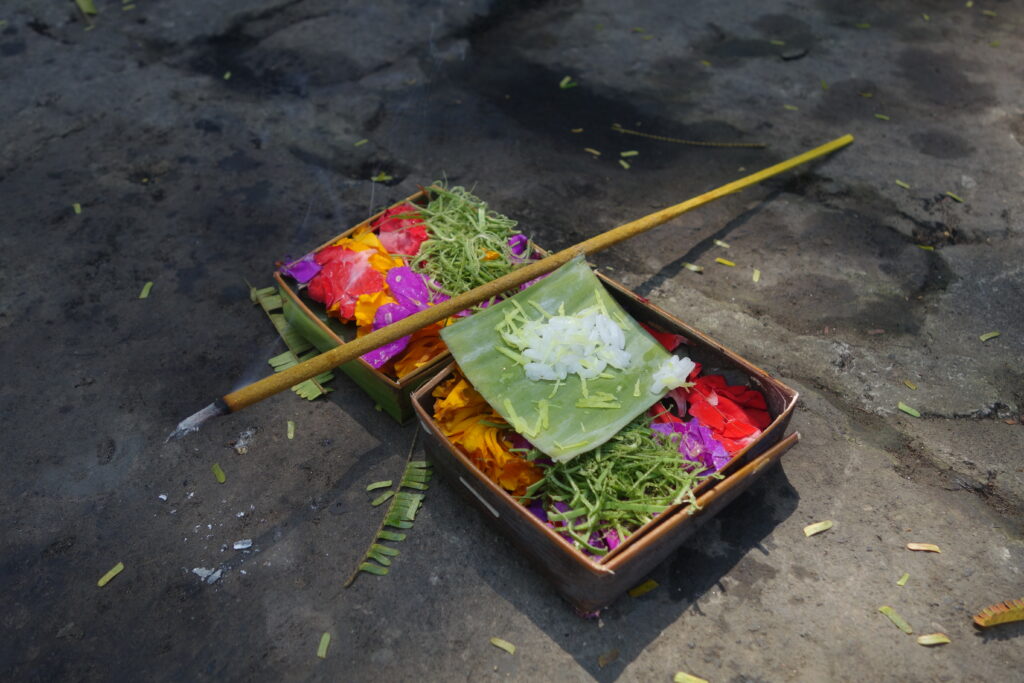
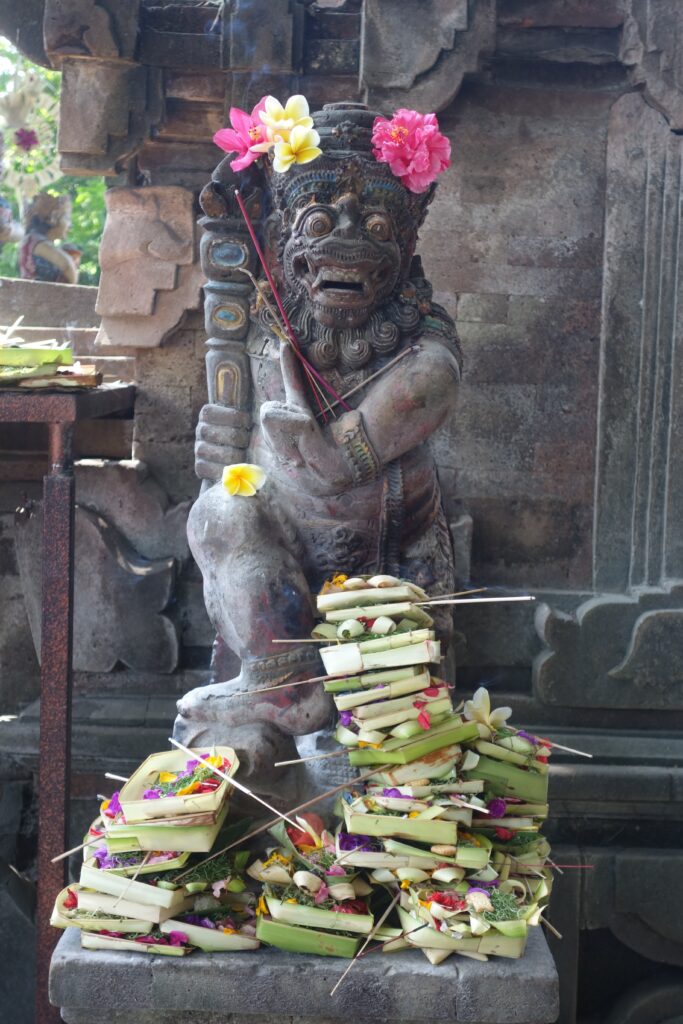
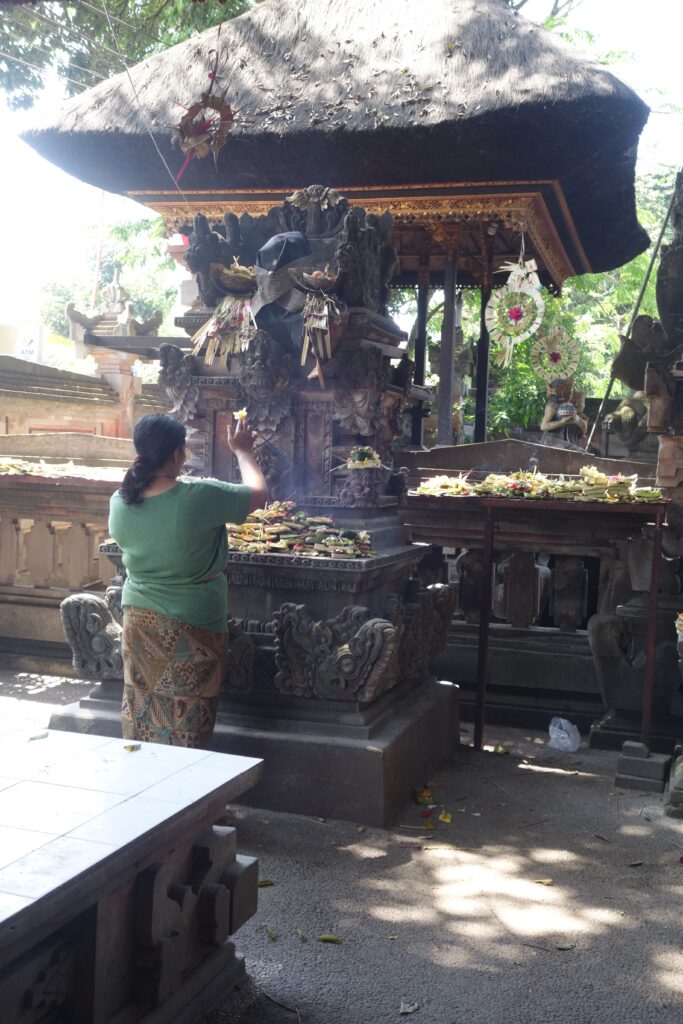
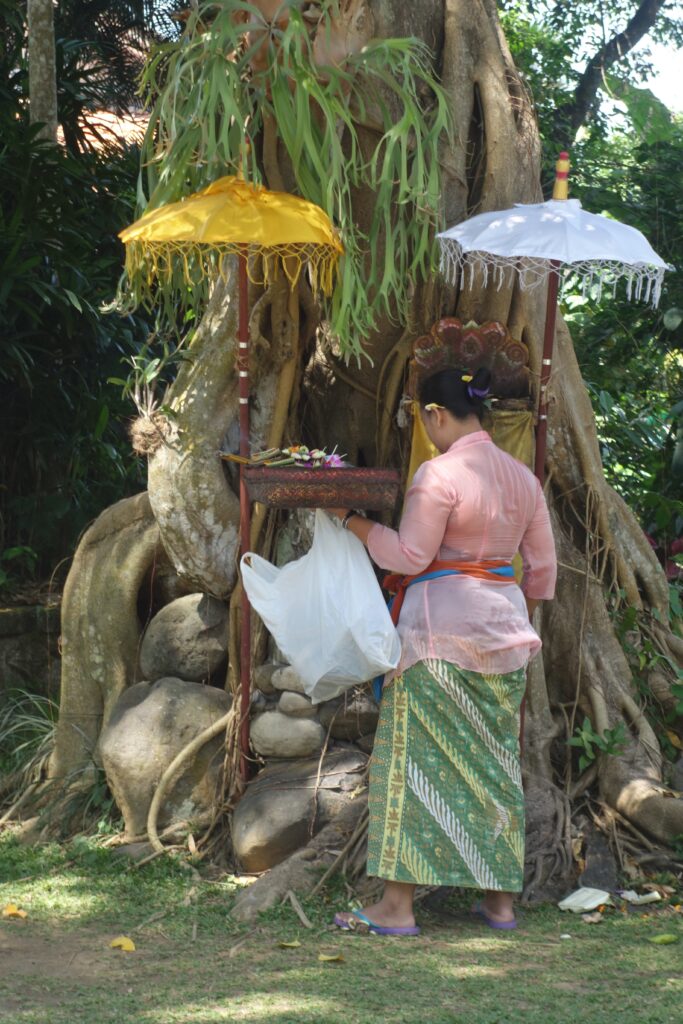
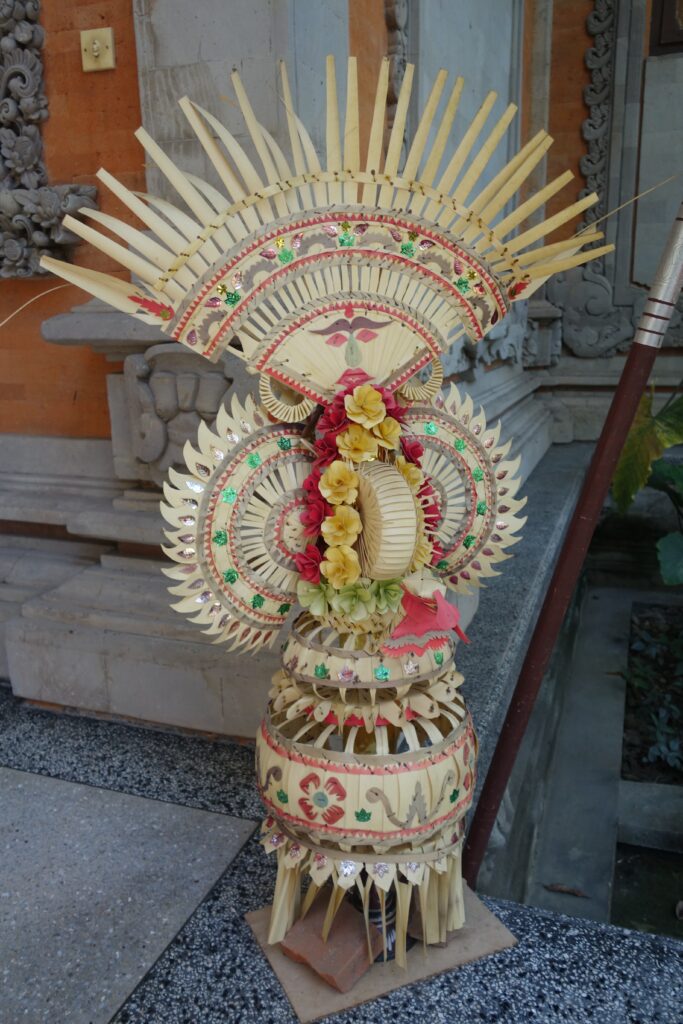
We were lucky to have visited shortly after a holiday because we were able to see the penjor, which are bamboo poles decorated with flowers, palm fronds, and other decorations.
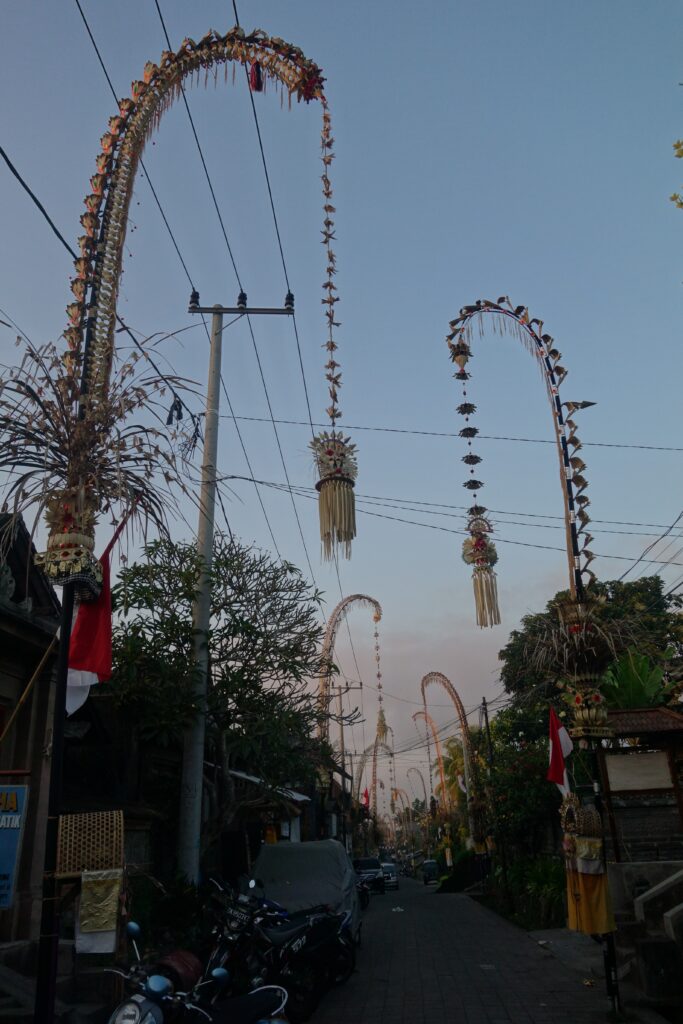
The penjor are erected for Galungan (one per household or building) and are often set up along the streets. The penjor take the form of a dragon, with the head at the bottom of the pole and the tail as the danging end. They serve to attract and appease the spirits. They beautify the area and have an altar built into them for offerings for their ancestral spirits as well as the gods.
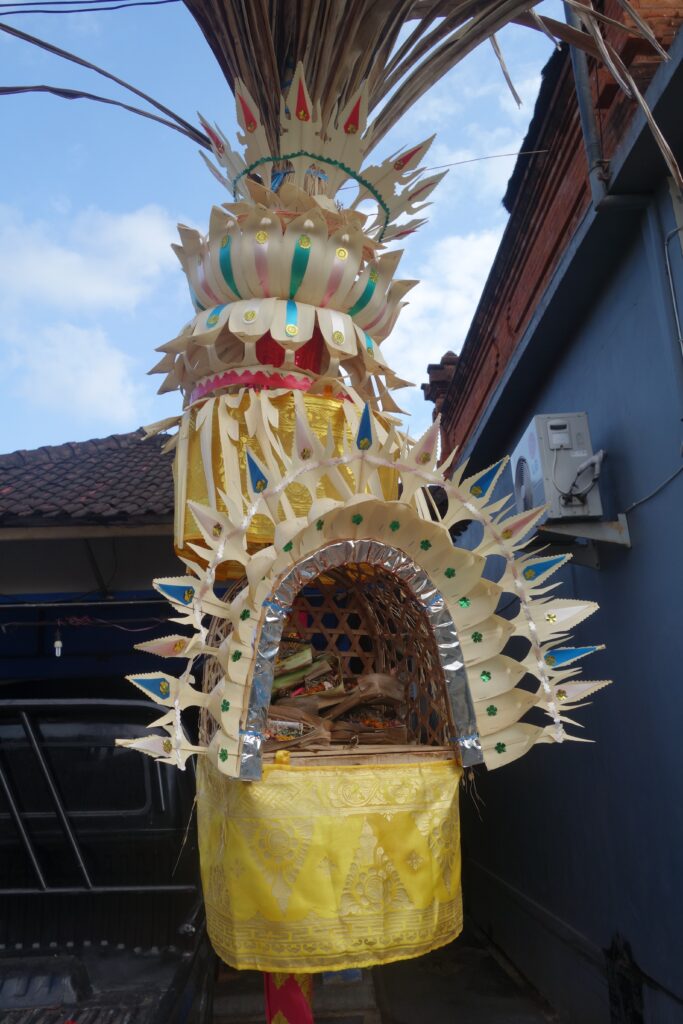
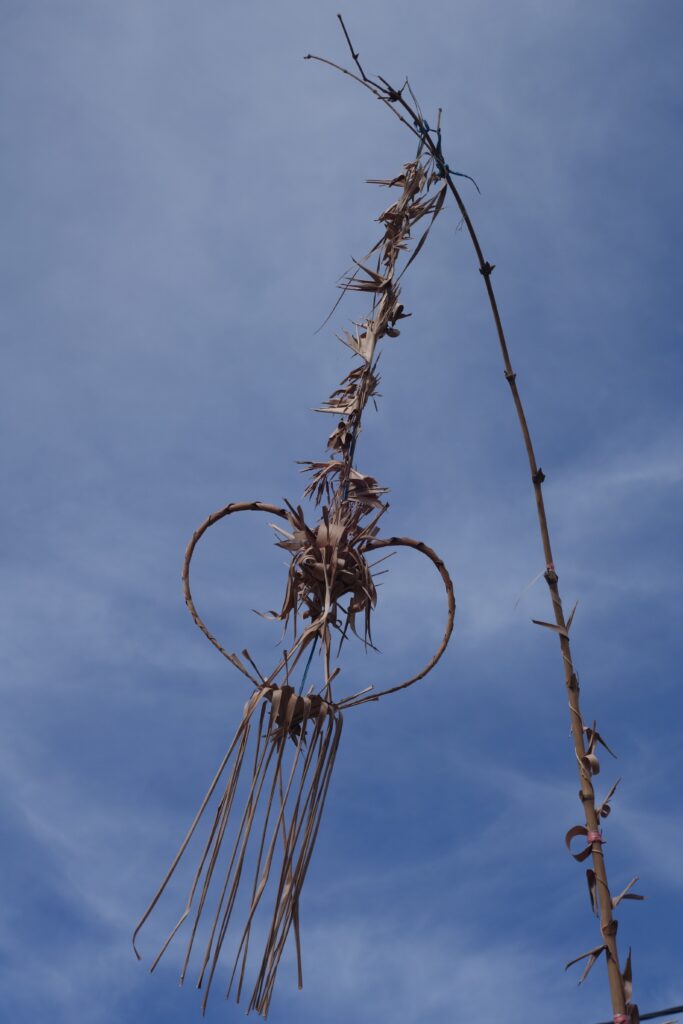
Most homes or family complexes also have a padmasana shrine – a family shrine. Seriously, these things were everywhere in Bali.
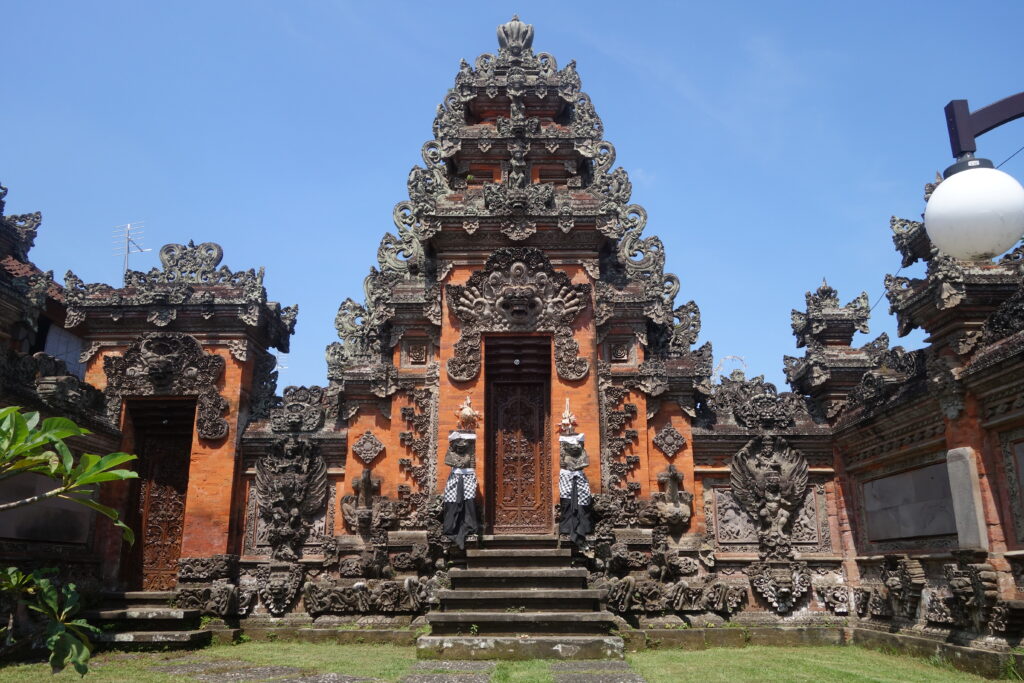
We also visited the ancient temples of Prambanan and Borobudur near Jogjakarta in Eastern Java. While not as awe-inspiring as Angkor, these were pretty amazing ancient religious sites as well. Both Prambanan and Borobudur were originally constructed as Buddhist temples. Buddhism is no longer a major religion in Indonesia but the temples remain. One interesting thing we’ve seen on our trip is that Buddhism seems particularly open to syncretism and as a result the Buddhism we’ve seen in each country has been significantly unique.

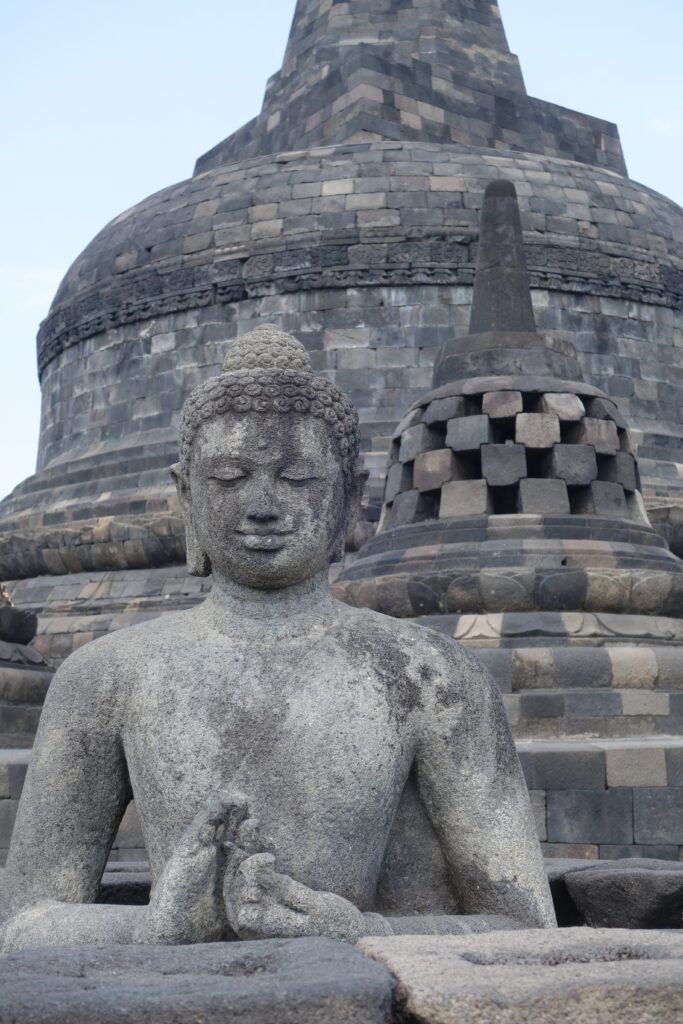

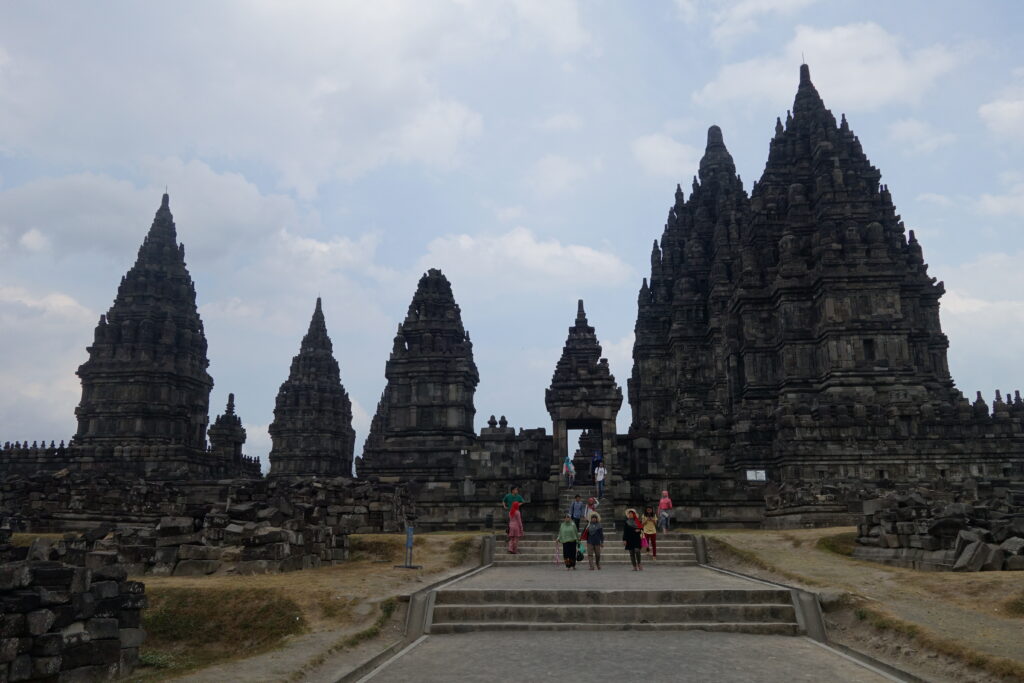
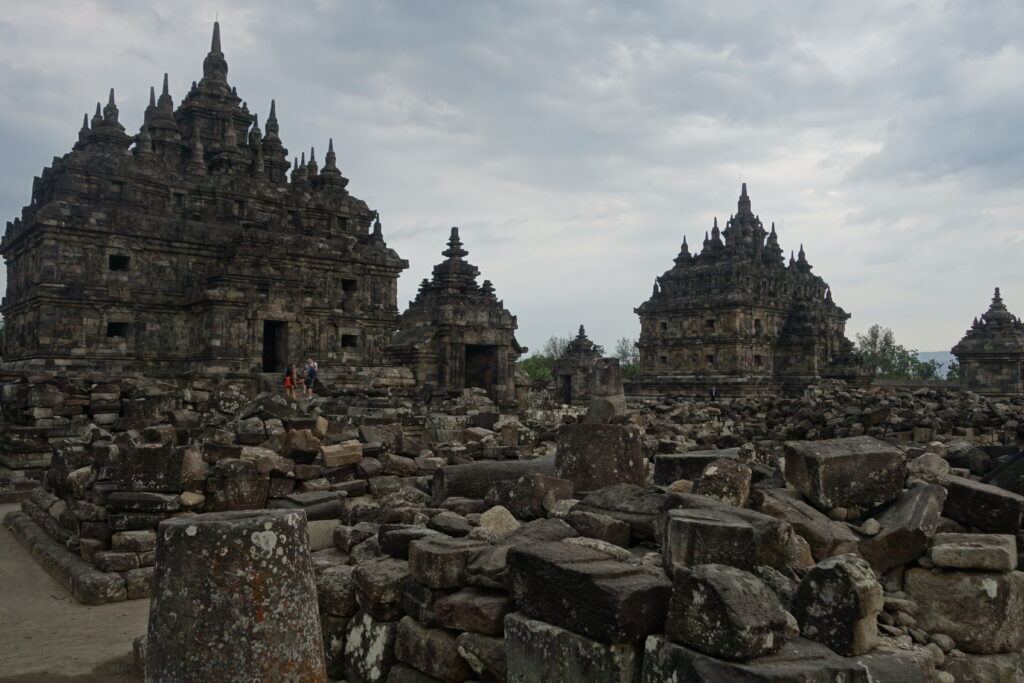
Culture continued: dance and theater
Indonesian dance is very intricate and unique. We saw Javanese court dance performed at the Sultan’s Palace in Jogjakarta as well as seeing Balinese dance being performed in Ubud.
Javanese dance is more reserved and refined with very intricate hand movements.

The dance at the palace was accompanied by gamelan, a traditional music ensemble.

Balinese dance is an ancient art form which often acts out religious stories. The dance involves intricate and angular hand and body movements and is quite intense.
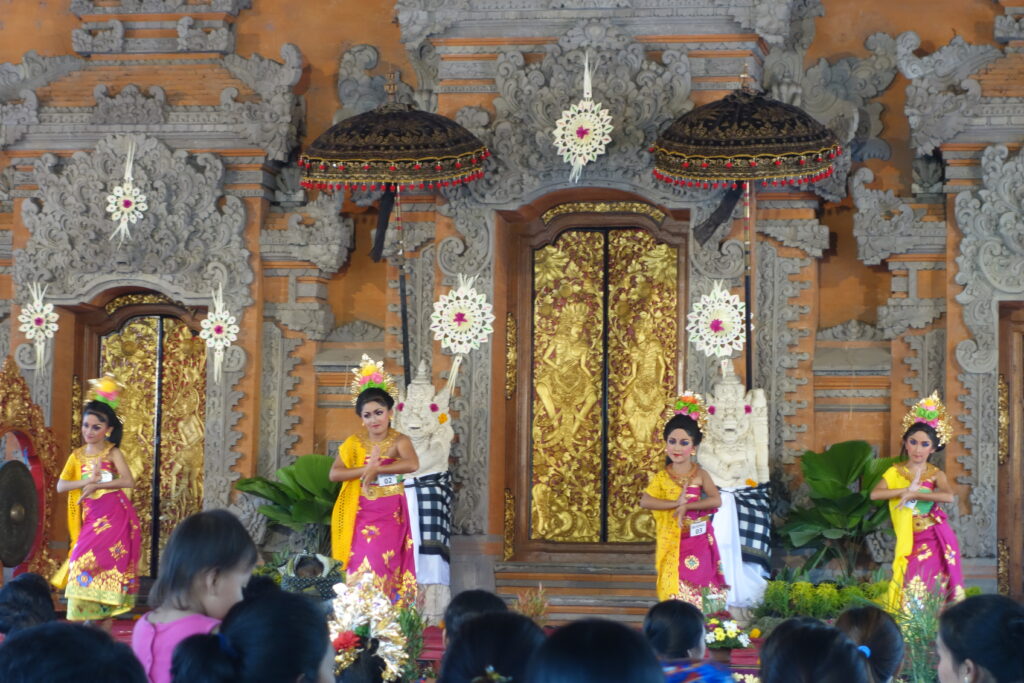
The videos below are from a public dance competition which we stumbled upon in Ubud. The girl second to the right has it down.

To summarize, the culture of Indonesia is variable, unique, and quite visible. It was very easy as a short-term visitor to learn a ton about the local culture because of its visibility and accessibility.
Variety in Landscape
Indonesia also has an awesome variety of landscapes, with great beaches, volcanoes, jungles, and even cooler highland areas. It is awesome to be able to experience such variability in such a small geographic area.
The Bad
Smoking
70% of Indonesian males over the age of 15 smoke. This was inconvenient for us on a few occasions. Particularly when taking the local buses as they were hot and stuffy with many smokers lighting up. Do you remember seeing this video? It all makes sense now…
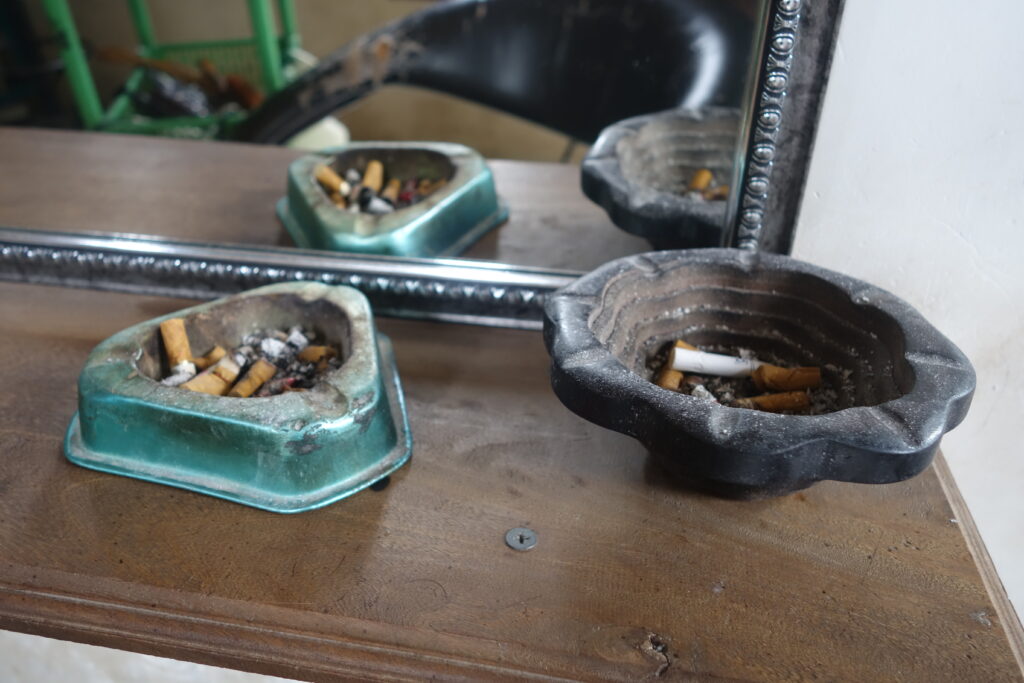
Transportation
Scams
Transportation can be a real headache, especially for a budget traveler using local transportation. On multiple occasions bus drivers tried to charge us hugely inflated prices for crappy local buses. We were even threatened and told to get off of the bus. This actually happened twice and both times we knew what the price was supposed to be but they would not budge and insisted that we pay their scammy price or get off the bus. The scammers were especially bad in Probolingo, which unfortunately we had to pass through twice. Our first time, we arrived and immediately got a minibus to Bromo (or so we thought). The driver just took us down the road to a booking office where they would have tried to sell us a whole tour package of Bromo. Fortunately the bus station was only a block away.
Later in our trip, we took a minibus from Padang Bai (eastern Bali) to Kuta. They crammed 17 of us into one van (some people didn’t even get a seat, but had to sit on the floor) which then took 5 hours to get to Kuta. Upon arrival in town, our driver stopped in the middle of an intersection, claiming that the van broke down (it didn’t, and were were supposed to get door to door service). When we told the driver that he needed to take us to our hotel (which was promised when we originally booked our ticket), he just ignored us and began smoking a cigarette. We waited for 10 minutes and realized that this guy was just going to continue to smoke and ignore us unless we paid him more money. The intersection we “broke down” at was controlled by the the taxi mafia meaning that the taxi prices we were quoted were insanely over priced. We had to walk down the street away from the area to find an honest taxi driver. It was infuriating to deal with people like this!
Other inconveniences
There were no seat belts in most of the vehicles, even when we paid for private transportation. The drivers drove like maniacs most of the time, swerving and passing constantly. During a single taxi ride, we got into two (minor) car accidents. The roads were very narrow which only exacerbated the terrible driving. Because of this, in the few cases where sidewalks existed, motorbikes and cars would drive on the sidewalk to try to get around the traffic. And as mentioned earlier, the buses were filled with smokers blowing smoke in your face.
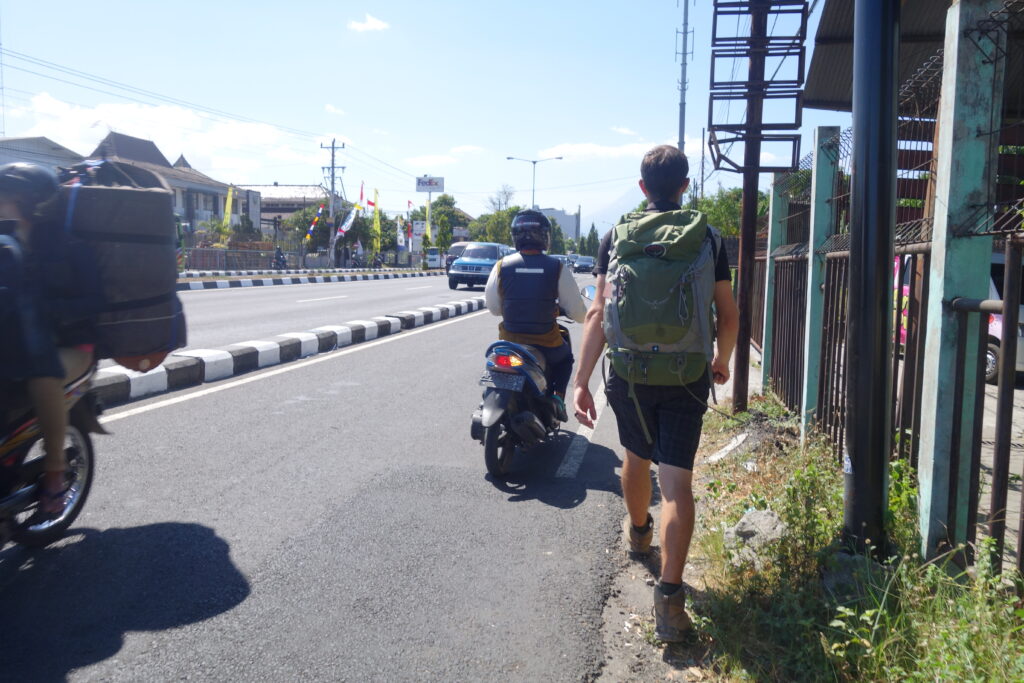
Sewers
The narrow roads were usually surrounded by open sewer or the occasional sidewalk which would randomly have holes in it. I would not recommend walking around at night without a flashlight.
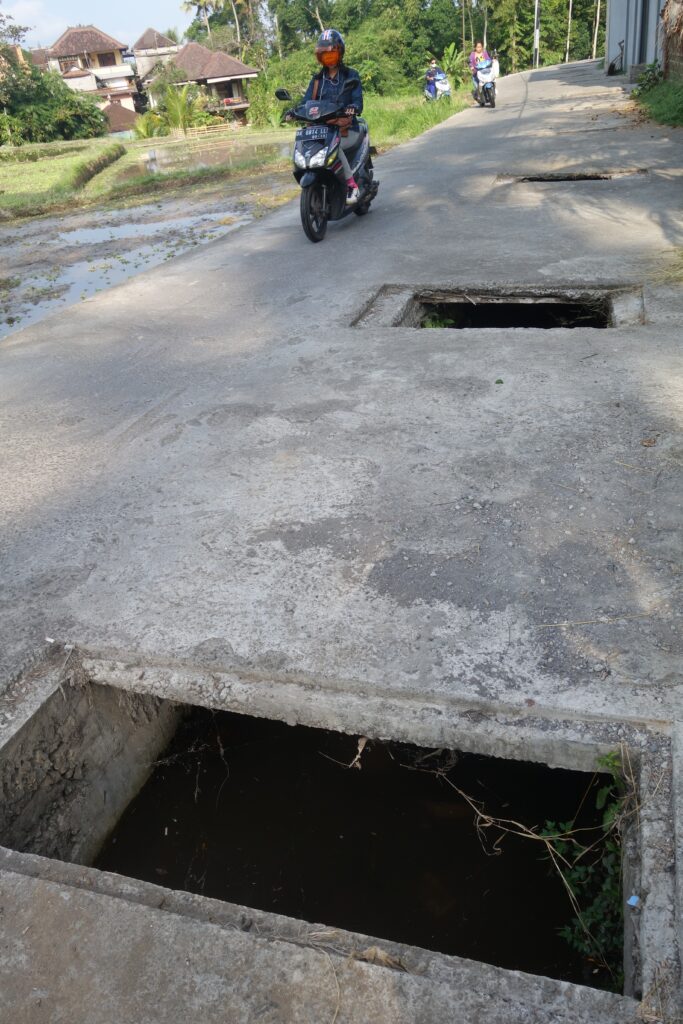
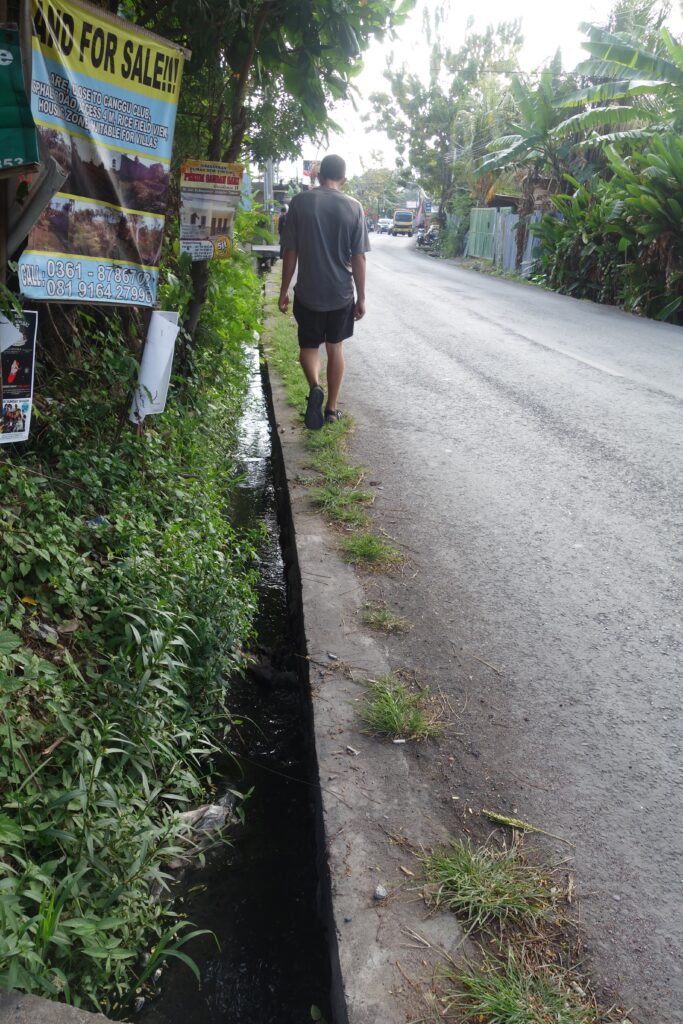
The bathrooms
While on the island of Java, all of the toilets were squat toilets. Furthermore, most of the toilets had neither toilet paper nor a bidet. You are supposed to use the bucket and scooper method (with your hand). All but one of our places of accommodation had bucket and scooper showers as well. To make matters worse, there weren’t any sinks in the bathrooms (even in a midrange hotel).


Lack of wilderness ethic
As beautiful as Indonesia’s natural areas are, they are also disappointingly polluted. Particularly at Rinjani. Hundreds of people are trekking there daily and despite its popularity there is almost no infrastructure (read, toilets or garbage bins). Instead of garbage being carried out and toilet trenches being dug like ought to occur under these circumstances, trash and feces are scattered along the trail. As we were trekking down to the crater lake at Rinjani, our excitement grew. It looked so incredible at a distance. Upon arriving, we felt like we had arrived at a landfill. They was garbage floating in the water, piled in half burnt heaps, and strewn about the grass. I cannot believe that the Rinjani entrance fee is not partially used to pay cleanup crews. Tourists pay $15/person to enter the park. 62% of the entrance fee goes to the Rinjani Trek Ecotourism Project which funds administration, community cooperatives, and operating costs, but does not seem to be doing much in terms of environmental initiatives. I think that this is a serious black mark against Rinjani.

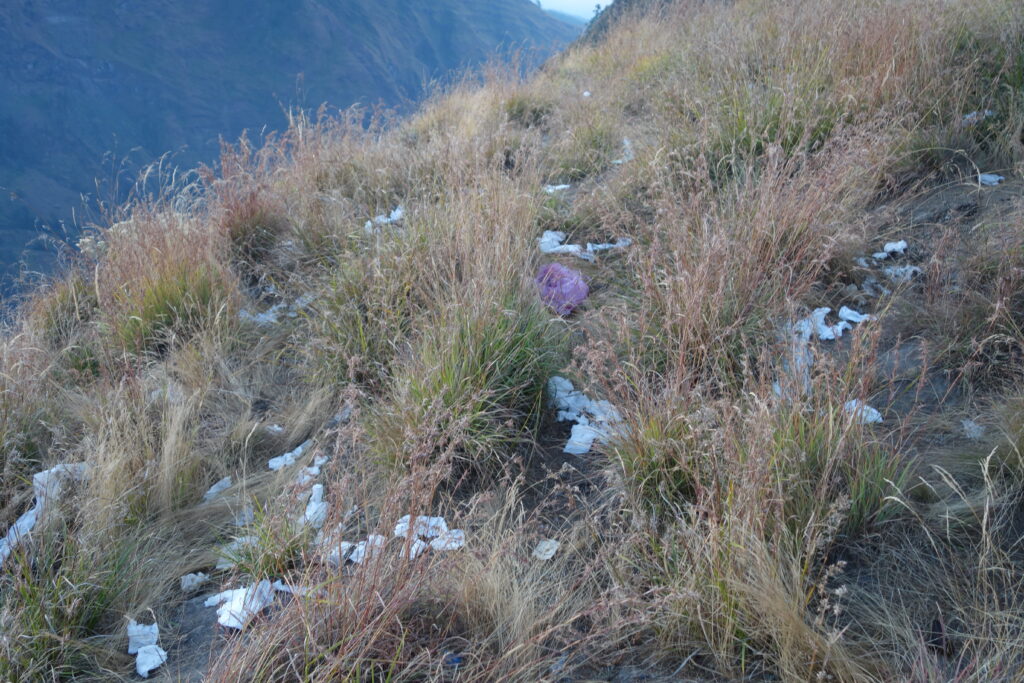
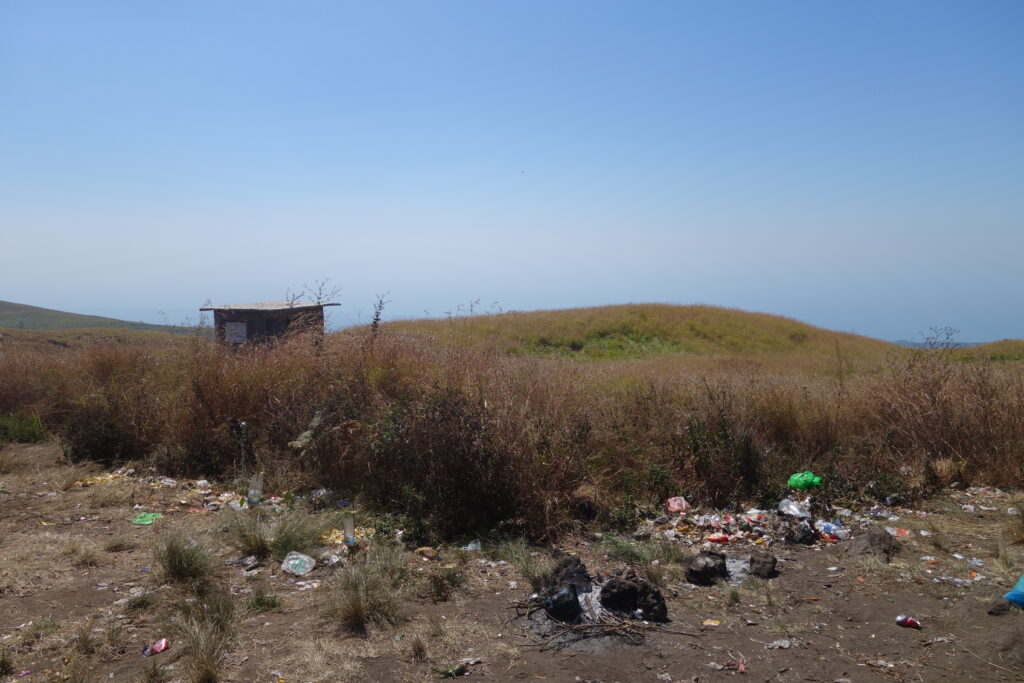
The Monkeys
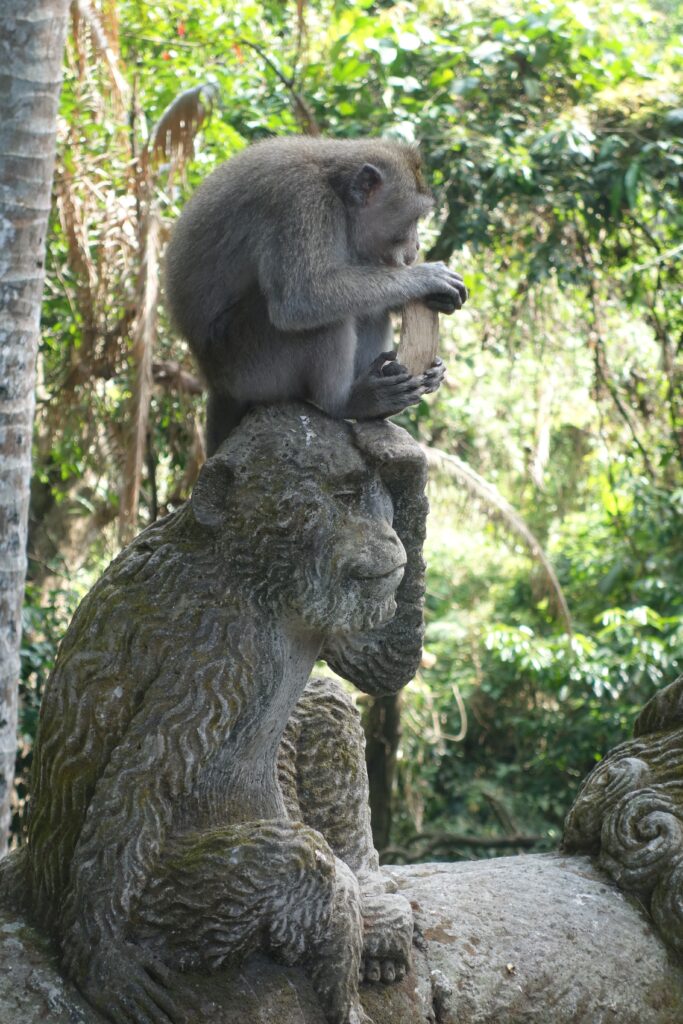
In Ubud we visited the Monkey Park, which had some atmospheric trails and temples. We had read a few negative reviews about the monkeys pestering people but we weren’t worried because we didn’t plan on bringing any food or plastic bags. It turned out that it didn’t matter whether or not we had food. We were basically mugged by the macaques. One climbed up Jon, bit the lid off of our water bottle and grabbed at our back pack. Another climbed up my leg and dug in my pockets, coming up empty handed he moved up and grabbed at my hand ( he was interested in the camera case, maybe thinking I was hiding food in it). He then climbed onto my head and sat there for a full minute pulling at my hair. Finally another monkey came to distract him and they ran off.
A little later, another monkey climbed up Jon’s leg and bit his hand (which was in his pocket) so that he could have access to Jon’s pocket. Realizing that there were no edibles there, he moved on.
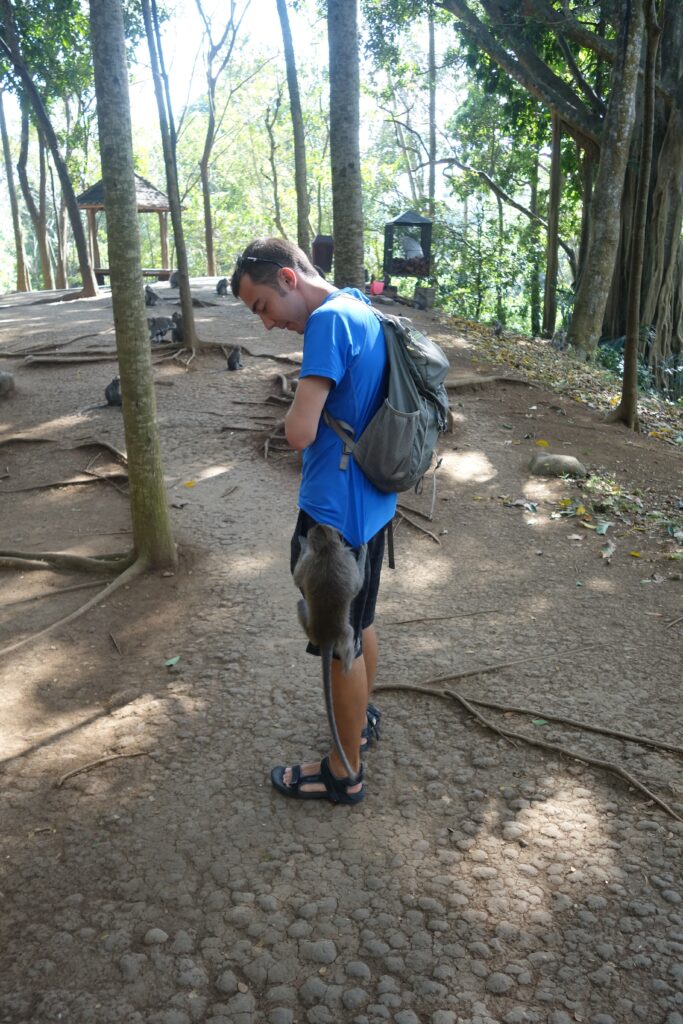

We ended up at the clinic getting rabies shots for Jon, just in case. Rabies is actually a significant problem on the Island of Bali, so we took precautionary measures.

The Quirky
Coffee
As a social lubricant
Coffee is very much a social drink in Indonesia. It is often consumed in the evening and it is common for people to get together at a cafe socially, similar to the way that we would gather with friends at a bar. We visited a cafe on a Friday evening in Jogjakarta and it was packed with people. It makes sense in the context, because Java’s citizens are primarily Muslim and do not consume alcohol. The coffee was amazing too, I might add.
Grounds
Another quirky aspect of the coffee in Indonesia is that it is served with the grounds in the cup (Turkish style). It was a little weird to get used to this.
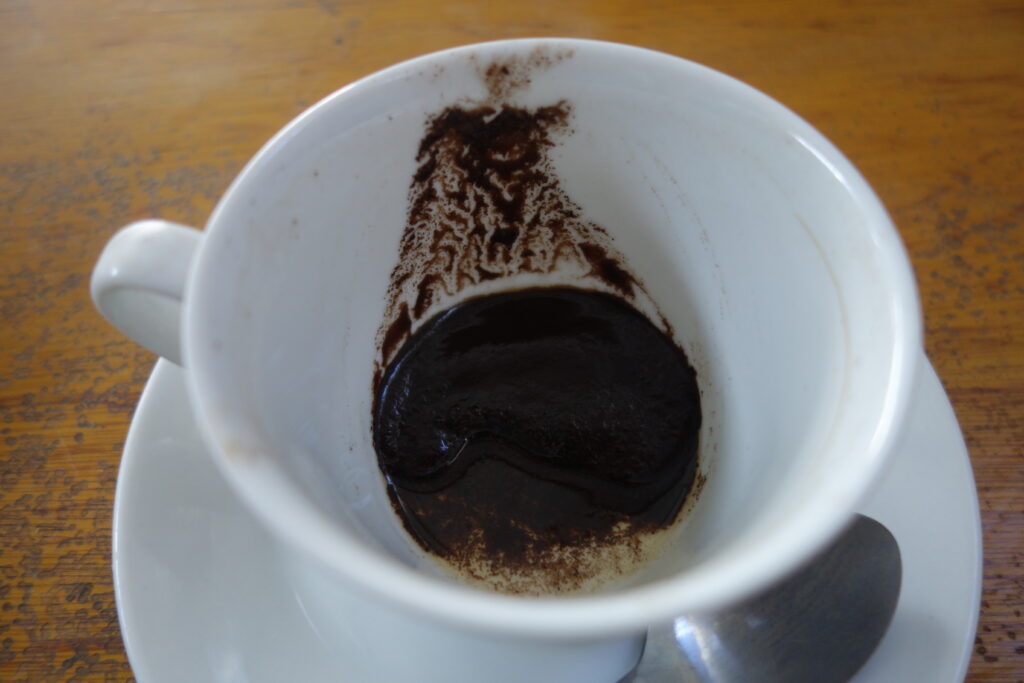
Our popularity
More so than anyplace else we have been, our popularity peaked in Indonesia. We had multiple groups of people ask us if they could take photos with us. At Bromo, a group of girls asked if we would take a photo with them. Shamelessly, one by one, they posed with Jon and I for multiple photos. On another occasion, a girl sitting next to me on the train was surreptitiously taking photos of me. Eventually she asked if I would take a photo with her. She proceeded to take selfies of us for 10-15 minutes. I’m not exaggerating the time; it was awkward.
Self employed parking assistants
Probably as a result of traffic being so crazy in Indonesia, there are self employed traffic directors with light wands who help you park or enter traffic. You tip them for their services.

Cheese on desserts
Many desserts in Indonesia are served topped with shredded mild cheese. It sounds weird but the salty and savory flavor went well with the desserts.
Harley Davidson
Harley Davidson was super popular in Indonesia, particularly on the island of Bali, and there was a large Harley rally in Indonesia while we were there. Harley is even hosting a convention in Bali this November. We saw many Harley bumper stickers and other paraphernalia. We were talking with a guy working in a travel agency who also fixes up Harleys in his free time. He buys parts online from the USA and has them shipped to Indonesia, assembles the bikes himself in Ubud, and then sells them for more than double the cost of the parts. He also sported a sweet Harley ring on top of his wedding band. This is apparently what happens to your stolen bike sent off to the chop shop.
Women doing all of the work
We kept seeing all the ladies doing all of the hard work – where are the men? 🙂
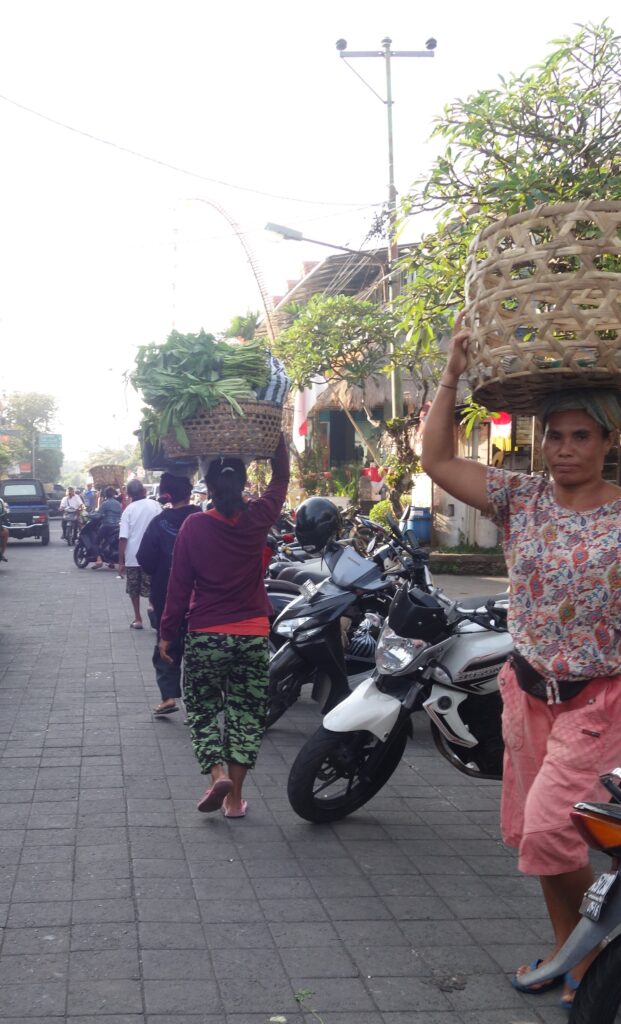
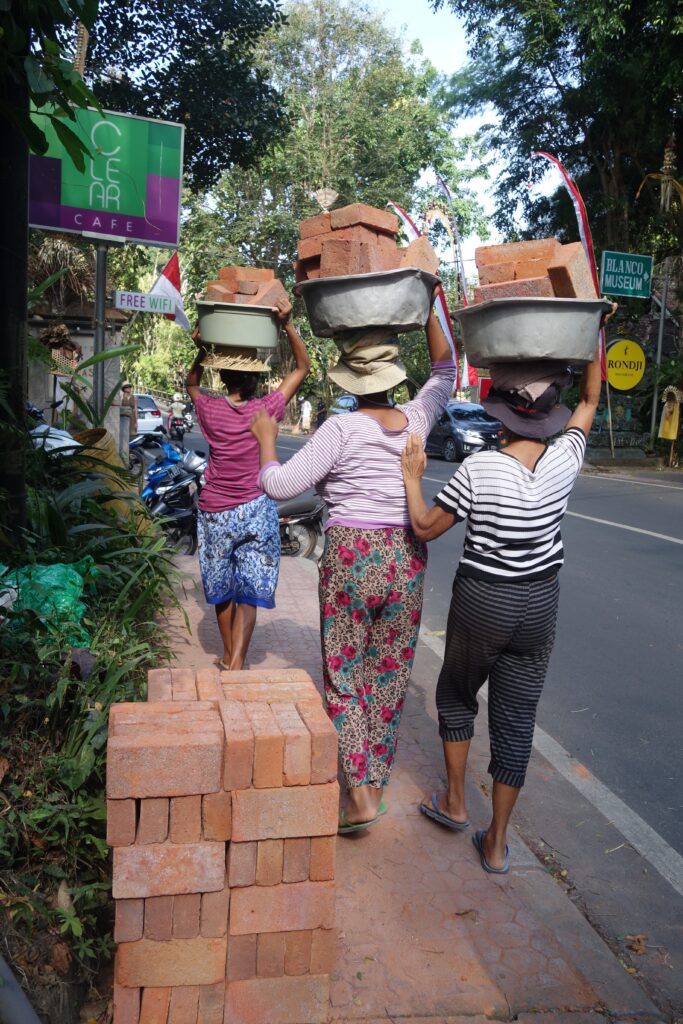
Conclusion
Indonesia was truly a unique country with friendly people, a vibrant culture, and a beautiful countryside. Surprisingly, we didn’t meet a single other traveler from the USA in our entire month there (though we met all of geriatric Australia in Seminyak). Is islamophobia preventing people from visiting Indonesia? Or are people still stirred up from the Bali bombings? Or is it just the distance? Whatever it is, Indonesia is a wonderful country and truly a hidden gem (at least for Americans) in Southeast Asia.
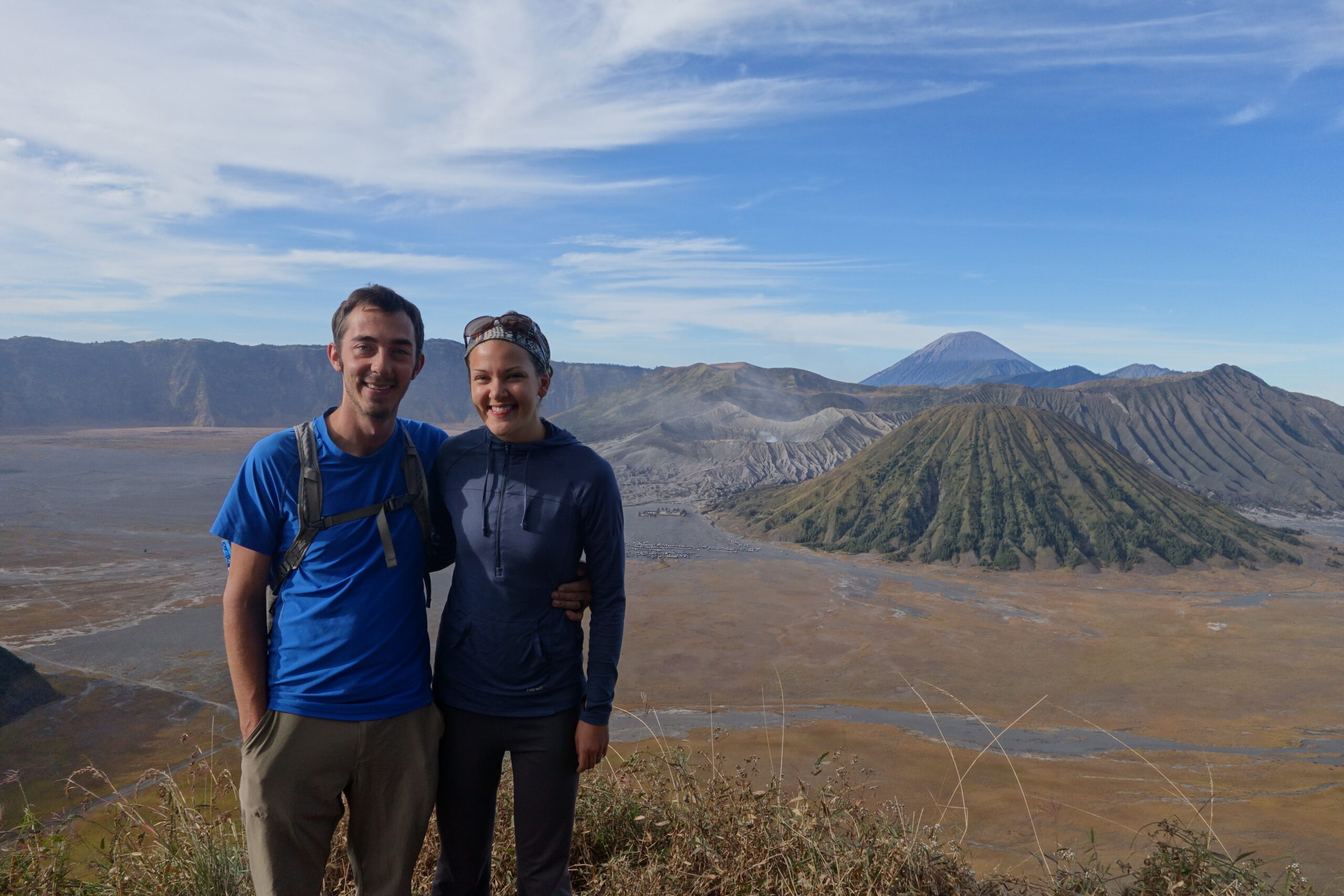


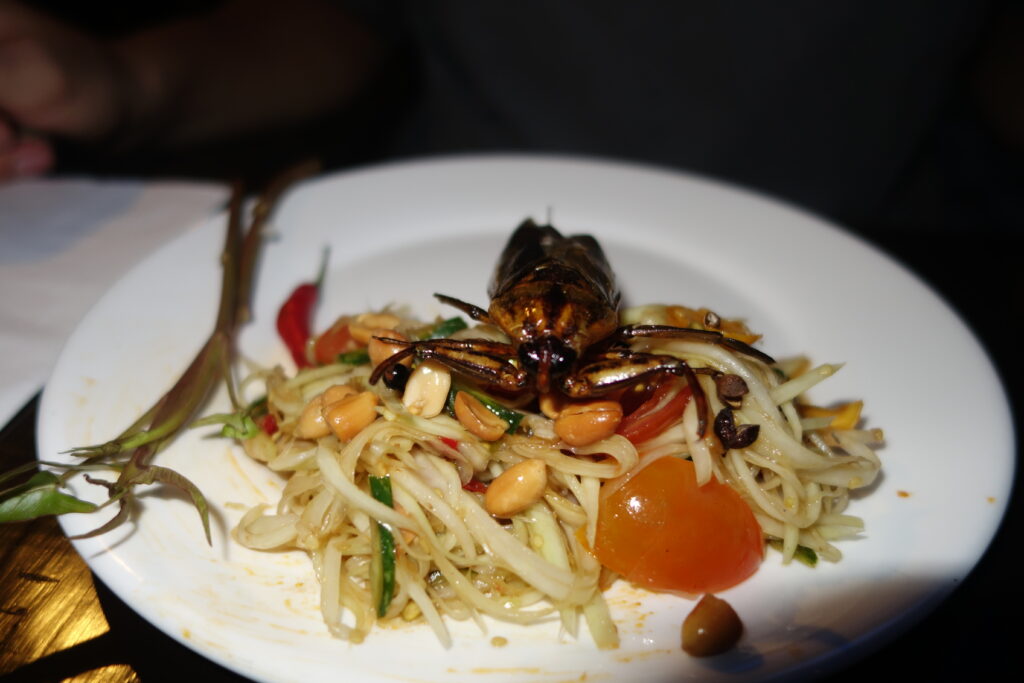
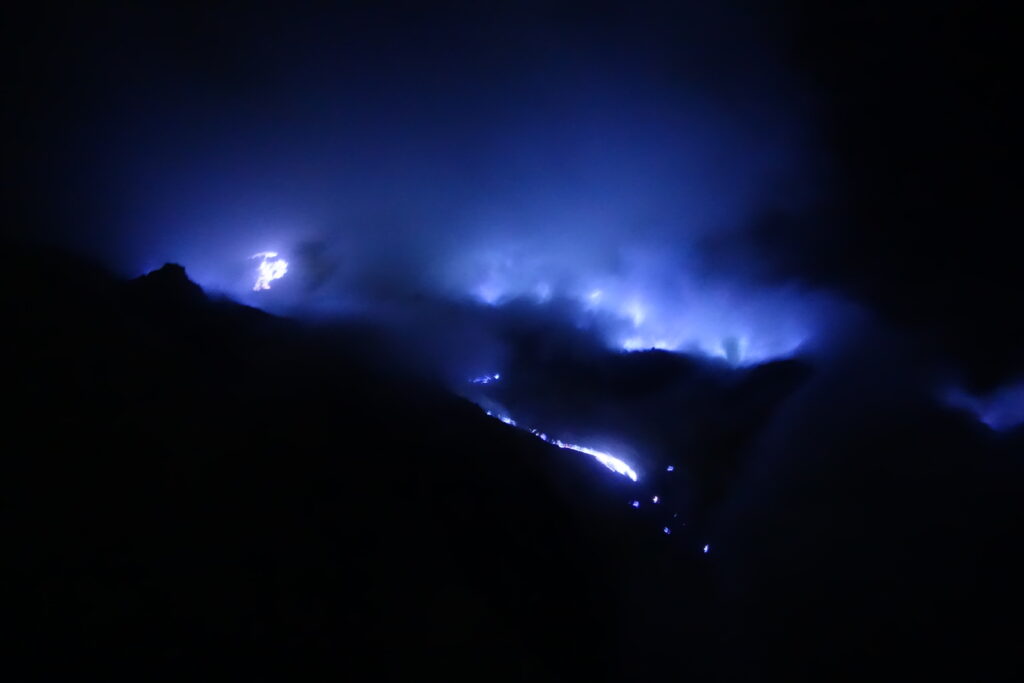
At Ijen you nearly suffocated breathing toxic fumes. Now Jon was bitten by a macaque requiring rabies shots? I’m not sure I have the courage to keep reading these blogs, even though they are fascinating and the photos incredibly gorgeous! Either that or you need subheads saying: Liz and Kim, please skip over this section.
The colorful batik cloths are beautifully intricate. Love the one you’re wearing, Amy. The dancers’ costumes are also stunning. How can a culture that fosters such artistic creativity not come up innovative ways to dispose of poop?!? Seeing all the garbage at the crater lake AND at your lunch spot is totally disgusting. How many cases of GI distress did you experience whilst in Indonesia?
BTW, this is perhaps the only Good, Bad and Quirky blog that does NOT mention food. What is the takeaway for readers?
Good point Kim – We will consider adding a “moms beware” heading before mentioning something that you don’t want to hear. I considered modifying some of the details of “the bad” section to tone down some of it, but in the end I opted for honesty 🙂
I agree that it is baffling that they have not figured out a way to deal with the waste problem. I am incredibly surprised that neither of us got sick during the trek considering the conditions. We did both get mild food poisoning a few days after arriving in Indonesia, but it passed quickly and neither of us had any problems for the rest of our time there.
While we really liked certain dishes we ate in Indonesia, we didn’t feel very in touch with the food culture. We ended up eating a lot of nasi goreng (fried rice) and mie goreng (fried noodles) which were good but not particularly creative. A few things that we really enjoyed were the tempeh sate with peanut sauce (the peanut sauce in Indonesia is awesome and tempeh is a delicious Indonesian invention), and gudeg (unripe jackfruit boiled with sugar and milk and combined with other ingredients). To be honest, it may have just been a result of being in really small towns with very few food options. I’m sure there is a lot of unrealized potential on that front. We’ll have to visit again and make food a priority 🙂
Hey you forgot the promised pix of your dirt and grime “tan.” Looks like you have new sandals, however. Did you completely wear out your old pair with all your hiking?
I had meant to comment on the Balinese dance dude — he reminds me a little of Freddy Krueger. Definitely disturbing!
So many things! 1: the Lugong dance totally flashed me back to Baraka! Or Samsara. Can’t remember which. The dancers’ huge eyes, head tilting, and intricate movements are simultaneously mesmerizing and highly disturbing. I think it’s the big eyes.
Come to think of it, do you guys feel like you’re on a Baraka/Samsara world tour? So many of the sites you’re visiting are featured in those films! Man..that would be an epic life goal, to visit all the places in the films.
I’d love to hear how Indonesian coffee differs from Turkish or Vietnamese. It looks lovely 🙂
We had the same thought about the Lugong dance! I just checked and that actually is in Samsara.
It would be awesome to visit all (well, perhaps most – I don’t think I want to visit a meat packing plant…) of the places in those films. The shots of Tibet in that film are one of the most awe-inspiring things I’ve ever seen on film. Now you got us wondering, and when we checked it looks like we’ve visited a handful of the locations on this trip.
The coffee was great at the coffee shop we went to with our CS host – it was a real coffee snob sort of place and they brewed a mean Aeropress espresso with local beans – but in general the majority of the coffee we were served in Indonesia was fairly bitter (because of the brew method) and bland black coffee. But it was still nicer than instant coffee!
that’s awesome that i’m actually right about samsara! 🙂 now I’m curious–so which places have you visited that were in the films? my guess is that angkor wat is in one of them.
ooh what are the local beans’ qualities in Indonesia? also you say most of the coffee you’ve had is bitter due to the brew method–what is the brew method?
also i want to read a post about your couch surfing experiences! i keep forgetting that you’re frequently surfing because I haven’t heard too much about your hosts yet. how many people have you surfed with so far? highlights? lowlights?
Samsara locations we have visited on this trip (not including those we have visited in the U.S. and Europe)
Baraka locations we have visited on this trip:
We visited every single filming location in Cambodia:
And elsewhere:
There are a few more that we have visited but not visited the specific filming location (eg. we have visited Cebu city but not the Detention and Rehabilitation Center in Cebu city).
I am now going to look at the filming locations in India and Nepal to see how many more we can hit!
As for the coffee: the arabica beans have low acidity and make for a sweet, bold coffee. But, we only had really good coffee once at the aforementioned cafe. We had a difficult time finding specialty coffee shops.
Unfortunately, much of the coffee that we had at small restaurants and cafes was finely ground (probably robusta) coffee that you just mix with hot water. The coffee came in small packets – often with a ton of sugar added. This combined with the grounds sitting in your cup continuing to extract as you drink and the inconsistent brew temperature, meant that the coffee was usually of poor quality.
We haven’t done much couch surfing recently (it is actually not exactly allowed in Myanmar) but hopefully we can turn that trend around! We will definitely consider writing a blog post about our CS experiences. We surfed a ton in South Korea but since then have only surfed 6 times. It isn’t always compatible with our flexible travel style.
thanks for the reply !
dude, i’m amazed at how many baraka/samsara spots you’ve been to! especially without even meaning to! Definitely shows how legit those films are. and you two 🙂
it’s okay that the coffee isn’t awesome. just one more thing to look forward to/be grateful for once you’re back state-side with us!